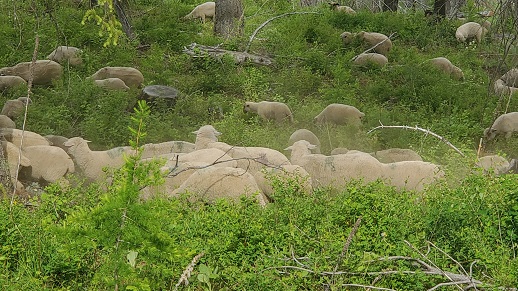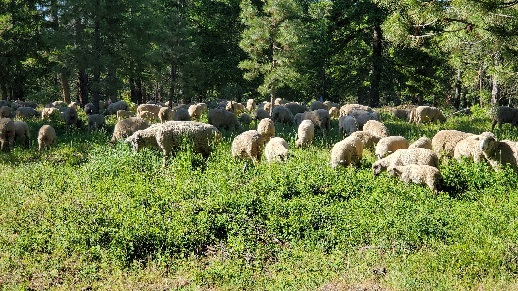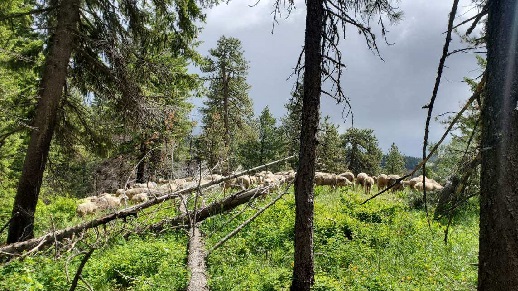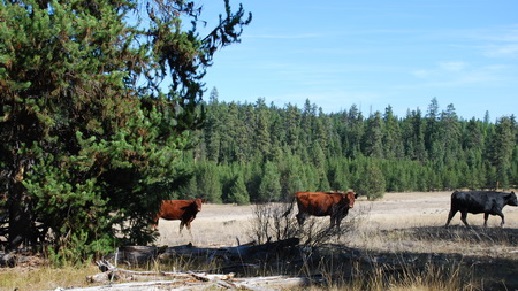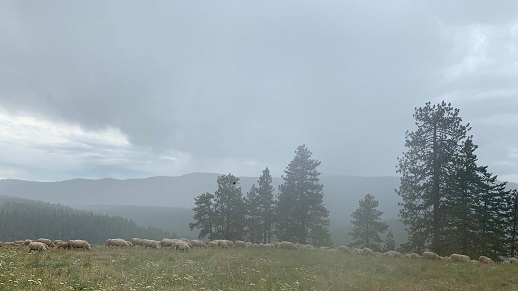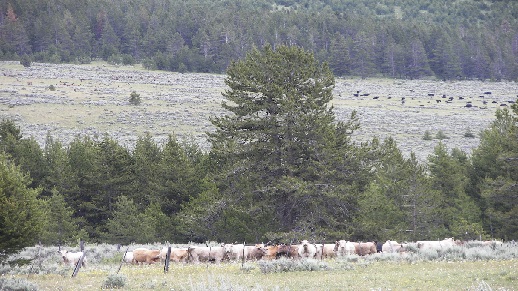Rangeland Management
Overview
The Umatilla National Forest has a multiple-use mission, which includes livestock grazing. Approximately 810,000 of the Umatilla National Forest's 1.4 million acres (which is about 58% of the National Forest acres) are rangeland and grazeable forestland. Of these acres, 344,000 (less than 42%) are suitable for livestock grazing in active allotments. This comprises 25% of the total National Forest acreage. The Umatilla National Forest has 34 allotments total, comprised of 30 cattle allotments and 4 sheep grazing allotments. The forest is currently providing forage for approximately 8,283 head of cattle and 18,877 head of sheep.
Rangeland Management Resources
- Grazing Permit Administration Handbook
- National Environmental Policy Act Scedule of Proposed Actions
- Rescission Act Schedule for grazing allotment NEPA
Umatilla National Forest Grazing Contacts
Recreation and Grazing on Public Lands
The National Forests are the public's land and are available for multiple uses. These natural resources are treasures and in order to sustain them for future generations these Forests are managed as working landscapes. That means when you are out recreating on a National Forest, you may see a variety of management activities, including timber harvest, prescribed burning, livestock grazing, noxious weed control, and much more.
The Umatilla National Forest is committed to sustaining our public lands. Rangelands are managed, in partnership with permittees, to provide for the long-term health of the environment; including forest and watershed ecosystems.
With that in mind, forest users may encounter livestock in the woods and can take some steps to safely share our National Forests wih the animals, while enjoying recreating on these treasured landscapes.
Recreation Tips
The following guidelines will help you have a positive recreation experience and minimize the potential for conflicts with grazing activities on the National Forest.
- Mountain biking/hiking
- Camping near livestock
- Vehicles and livestock
- Hunting interactions
- Livestock protection dogs
Mountain biking/hiking
When out mountain biking or hiking in the Forest you may come across a herd of cattle or band of sheep. Mountain bikers can inadvertently pose a threat for livestock protection dogs. Generally, if you are approaching by foot, horseback, or on an ATV, a livestock protection dog will see and/or hear you approach and have time to recognize the new “intruder”. However, mountain bikes are fast, relatively quiet, and present an unknown profile to the livestock protection dogs. Avoid rapidly approaching a flock of sheep and startling the animals.
Camping near livestock
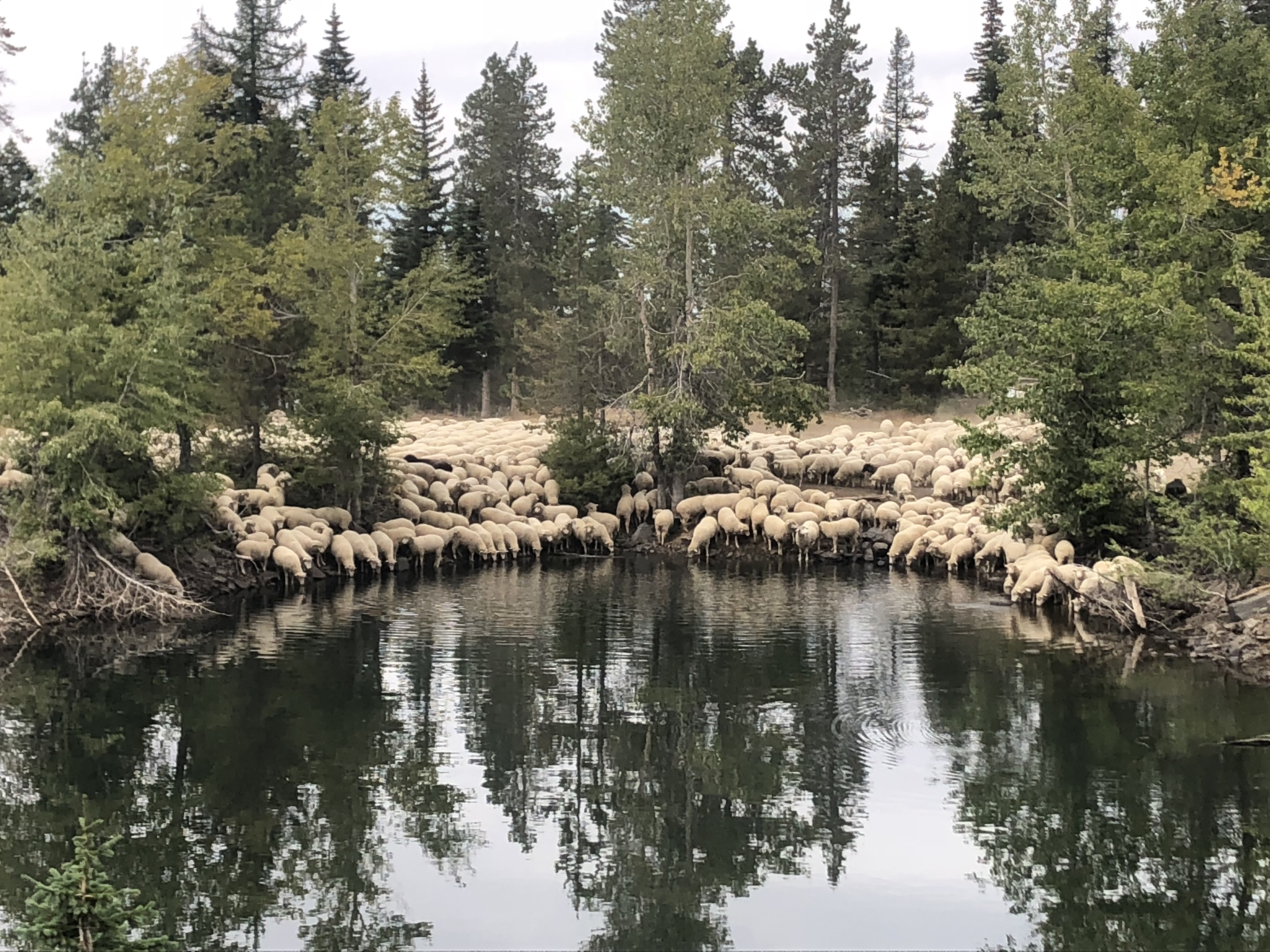 If camping near a waterhole or small pond, cattle or a band of sheep could be using the water as well. These are shared resources, so please be aware and anticipate potential interactions. Additionally, pack out anything that you pack in. Leaving no trace is important not only for helping preserve our National Forests, but also minimizes the chance that livestock or wildlife will ingest garbage or other items left behind.
If camping near a waterhole or small pond, cattle or a band of sheep could be using the water as well. These are shared resources, so please be aware and anticipate potential interactions. Additionally, pack out anything that you pack in. Leaving no trace is important not only for helping preserve our National Forests, but also minimizes the chance that livestock or wildlife will ingest garbage or other items left behind.
Vehicles and livestock
If you are driving a vehicle and sheep or cattle are being trailed on the road, please be patient. Stay in your vehicle and do not wave or dangle your arms outside the vehicle. If you have a dog in your vehicle, make sure to keep it calm and quiet. Drive forward very slowly, but do not bump the livestock out of the way with your vehicle.
Hunting interactions
Hunting season brings thousands of people to the Umatilla National Forest each year. Livestock are still on the Forest during these months and often hunting camp sites will overlap with grazing allotments. Know the areas where cattle or sheep may be grazing during hunting season. Avoid firing guns near livestock and report any stray livestock to the Forest Service, if you know the grazing rotation.
Livestock Protection Dogs
If unprotected, sheep can be killed by a variety of predators including coyotes, bears, mountain lions, wolves, or domestic dogs. Permittees have limited options for protecting their sheep from predator attacks. Livestock protection dogs have become an extremely important means to reduce predator attacks on sheep.
Livestock protection dogs live with the sheep and patrol the perimeters of the sheep grazing area to ward off predators. These dogs have been bred and trained to bond with the sheep and protect the bands from predator attacks. These are working dogs and their job is to protect the sheep.
When recreating on the Forest, please abide by the following guidelines to have a positive experience and minimize conflicts if you are near a band of sheep:
DO...
- If you have a dog, keep it on a leash and never allow it to harrass the sheep.
- If you come across sheep, watch for livestock protection dogs (usually a large whie or tan dog).
- Remain calm if approached by a livestock protection dog.
- Bikers should stop and get off the bike, putting the bike between themself and the dog until well past the sheep.
- If approached by a dog, tell the dog to "go back to the sheep".
- Keep your distance from the sheep and choose the least disruptive route around the sheep.
DON'T...
- Chase or harrass the sheep or dogs
- Try to outrun the dogs.
- Throw things at the dogs.
- Make quick movements.
- Feed the dogs.
- Take a protection dog with you.
- Attempt to befriend or pet the dog.


